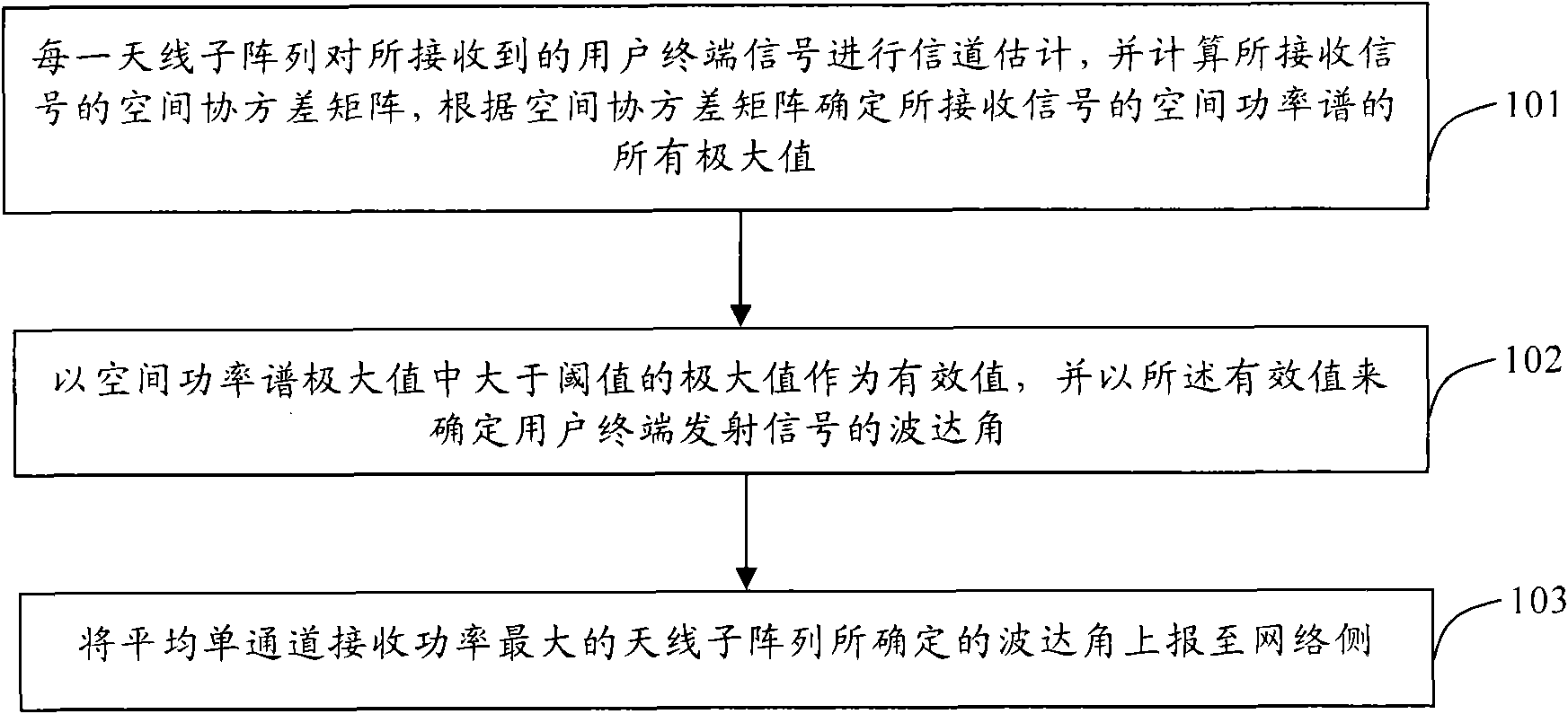Method for estimating elevation angle of intelligent antenna multi-subarray system
An antenna sub-array and smart antenna technology, which is applied in the field of angle-of-arrival estimation of smart antennas, can solve problems that do not involve multi-sub-array solutions, and achieve the effect of simple implementation and accurate estimation
- Summary
- Abstract
- Description
- Claims
- Application Information
AI Technical Summary
Problems solved by technology
Method used
Image
Examples
Embodiment Construction
[0018] The basic idea of the present invention is: the previous smart antenna system is a single-antenna sub-array, and there is no situation that most angle-of-arrival reporters need to choose to report. The present invention first performs channel estimation on the user terminal signals received by each antenna sub-array, and calculates the spatial covariance matrix of the received signals, and determines the maximum power value of the received signals according to the spatial covariance matrix, thereby determining some possible waves angle of arrival; finally calculate the average single-channel received power of each antenna subarray, and use the estimated angle of arrival of the largest antenna subarray as the reported value. The invention is simple to implement, and the estimated value of the reported angle of arrival is relatively accurate. The present invention will be described in detail below in conjunction with the accompanying drawings.
[0019] figure 1 It is ...
PUM
 Login to View More
Login to View More Abstract
Description
Claims
Application Information
 Login to View More
Login to View More - R&D
- Intellectual Property
- Life Sciences
- Materials
- Tech Scout
- Unparalleled Data Quality
- Higher Quality Content
- 60% Fewer Hallucinations
Browse by: Latest US Patents, China's latest patents, Technical Efficacy Thesaurus, Application Domain, Technology Topic, Popular Technical Reports.
© 2025 PatSnap. All rights reserved.Legal|Privacy policy|Modern Slavery Act Transparency Statement|Sitemap|About US| Contact US: help@patsnap.com



